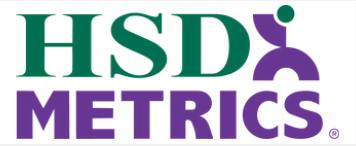Once you’ve learned why your employees leave, how do you start fixing the problem?
One of the common turnover causes we see from exiting employees is the balance of workload. Work redesign is a workplace flexibility initiative that can help reduce employee turnover. Our ExitRight® exit interview software has the capability to take note of both unbalanced workloads and the fact that new techniques in the workplace don’t always relieve the strain. Check out this real-life example of feedback from a client where an unbalanced workload made the work more difficult:
“The workload was average to high capacity. The load gradually got larger and larger, not necessarily doing the same thing either. I believe that new techniques brought into the department should make things easier and clearer; not more difficult.”
Once you’ve identified via a former employee that your workload management and work design need to be updated, you have a task and direction. But how do you get started?
Here are a few very high-level steps that take place during the work redesign process:
Assess
Begin by reviewing the current workflow and outline the current state. You’ll want to be as upfront as possible with any even remotely involved staff about the changes you’ll be making and the due diligence being taken to ensure everyone is treated fairly and stands to benefit significantly. Discussing the end goal of the work redesign program will help employees feel involved and work toward the end goal of the program, which is truly their satisfaction and productivity.
To better understand pain points from every perspective, begin conducting employee interviews to identify major priorities – evaluating how long tasks/projects take, determining barriers to efficiency and learning what doesn’t get done as timely as employees would like. This is the point where our consultants typically spend some additional time to relay feedback with senior stakeholders in the organization, validating the investment moving forward.
Redefine
Employee interviews require plenty of heavy lifting but the immediate next steps are where the body of work most comes to life. Create your new and improved workflow, identifying all the tasks the workflow comprises. Popular visual diagramming tools can help to iterate and collaborate on a workflow solution that meets every requirement.
Review the new workflow with stakeholders to ensure that methods and procedures are carefully defined – some key gaps may begin to bubble up to the surface within the decision-making team. This is also an ideal time to solidify measures of success and measurable outcomes since it will become very clear how this process will begin to play out in terms of milestones and participants.
With tasks ironed out, the team can begin to outline the required qualifications, experience, skills and competencies for individual positions. Complete an assessment o the current talent pool based upon levels of role complexity, skills and knowledge within the organization, along with an impact analysis related to diversity. Based on the gaps identified from that assessment, a gameplan for solutions to buy, build and borrow talent will emerge. Always keep in mind that findings from talent gap analyses are typically very sensitive for internal personnel.
As you begin to share performance metrics with the wider organizational audience, also introduce reward and recognition programs to sustain and encourage the changes.
Implement
Continually communicate the value of the new workflow with those impacted by the change – depending on the organization, the first few months can be tumultuous as teams adjust. Always provide opportunities for ongoing feedback from employees, keeping communication lines open and support abundant.
Monitor
Monitor the progress of the work redesign strategies at defined intervals and modify the workflow as necessary, establishing a regular cadence to apply and communicate changes.
Review
Review and evaluate performance metrics frequently throughout the first year of the change.
Work redesign can tremendously benefit your team’s productivity and engagement – but it’s no light undertaking. HSD Metrics can support your initiative with data-driven, expertly designed surveys that can demonstrate the progress you’re making and where there’s still ground to cover. Contact us today for more information on how we can help your achieve your retention goals or to schedule a free demo!


